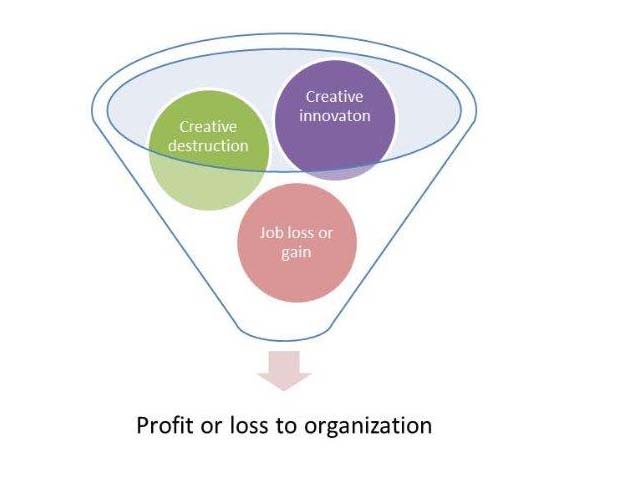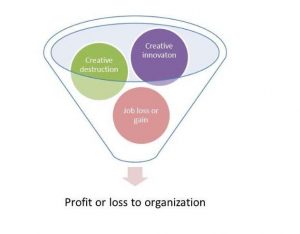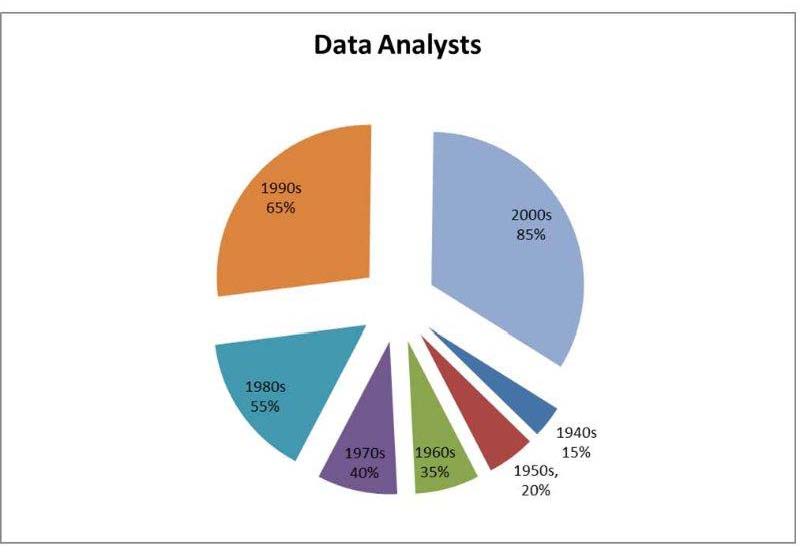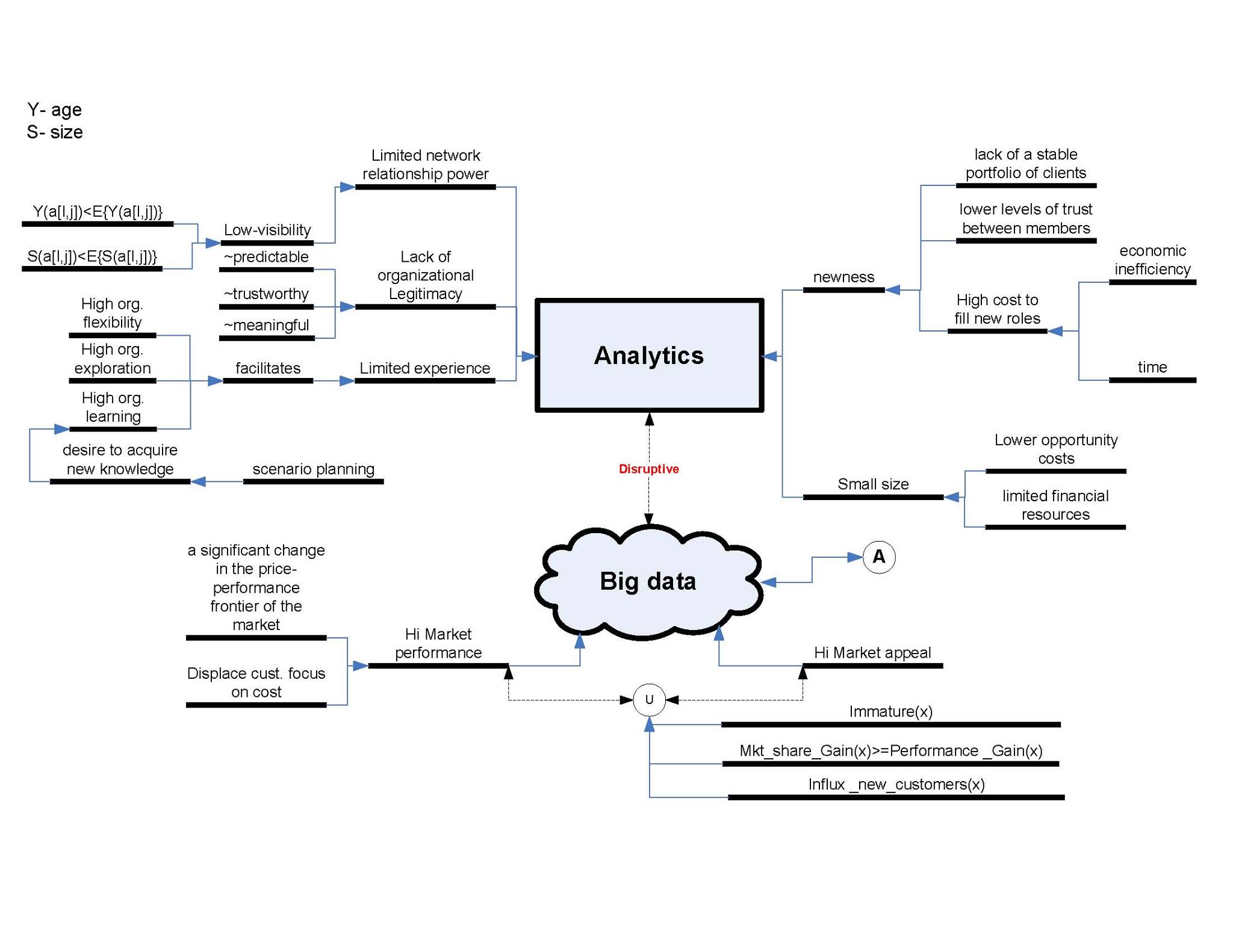Modular changes to radical platforms were disruptive to technologies. This synopsis tends to explain that technological changes have had its steep root in “creative destruction.” Creative destruction will be expounded upon in here pro anon. The present Internet of Things (#IoT) and Industrial Internet of Things (#IIoT) are anchored on creative destruction doctrine. These modular changes of innovative technologies were historically regarded as the creative destruction as advocated by Joseph Schumpeter in 1942. An erudite and witty economic thinker, in his typology, he indicated the semi-perennial gale and objective of creative destructiveness was the idyllic purpose of discarding the old or failing existing technological products and systems with the newly creative ones (Garrison, Harvey & Napier, 2008; Greenspan, 2008; Smith, Ward & Schumacher, 1993). Schumpeterian scholars’ advocated “creative destruction” and the historical nuances inculcated in the theory remained a pathway to growth in capitalism and organizational profitability (Koster, 2012; Perry-Smith, 2006). According to Koster (2012), “Creative destruction” has helped deft Leaders, Managers, Data Analysts, Data Scientists, and Information Analysts, and most significantly, the convergence of Operational Managers and Information Managers to filter the overwhelming data generated by genomic sequencing and continuous sensors (see the case studies herein on www.Jofdt.com ). Simply stated, the raison d’etre of any organization is to be profitable
Likewise, this phenomenon has ensured equal access to resources having to do with the potential of eugenics; the protection of genomic data from authorities and corporations; how and when the exorbitant upfront costs could offset the current fiscal inefficiencies, and prevent the formation of “cyberchondriacs.” Literally, analysts extracting important data from the large data sets in helping leaders to making pertinent and strategic decisions within organizations while taking the cost and benefit into consideration(see figure 1 below). The usefulness of the important data and the real-time use must be paramount within silos of making such critical decisions by the leaders and managers, read more here at on the various case studies on this site.
However, there was complementariness or competing hypothesis to the Schumpeterian growth theory especially within scholastic domain of disruptive technologists. Some scholars advocated that “creative destruction” destroyed jobs and created massive economic downturns and example will be the recent employee layoff at Hewlett-Packard and Yahoo by its executive CEOs (see the case studies herein on www.Jofdt.com ). Literature used in this synopsis has noted that creative destruction on its own, did not lead to the transactional situational happenstances associated with innovation. Instead, creative destruction was the outcome of a set of processes that propagated innovation and in the process created high tech jobs while eliminating unskilled labor from the job market (Aghion & Howitt, 2009; Kolb & Kolb, 2005; Perry-Smith, 2006; Wallas, 1926). Gleaned literature and study revealed replete of this theory. A competing hypothesis stated that creativity started with preparation, incubation, insight and verification, and that the entrepreneurial success was intertwined with the combination of intrinsic value and certain supportive forms of “synergistic extrinsic” motivations (Maliranta, 2010). Meaning, people are motivated to be creative and the creativities add value and intangible profit to the overall organization. Present-day Schumpeterian scholastic growth theorists espoused that innovations have brought about new business opportunities and eventually created new jobs in the units (plants or firms). In addition, exploiting and implementing these innovative processes have made some of the old units and their technologies obsolete, resulting in job loss as stated earlier with the recent case of HP and Yahoo (Germmell, Boland & Kolb, 2012; Maliranta, 2010).
Generally, the difference between creative destruction and creative innovation was the latter led to the innovative process of creating new disruptive technologies within organizations; while the former spawned the trajectory towards transactional leadership for innovation. For instance, Kodak’s failed leadership fell into this category, where online printing, digital and microchips led to its complete demise. Radical platform networks have displaced high cost gatekeepers with meritocratic crowds. YouTube and eBay have flipped the gate-keeping process away from the traditional brick and mortar businesses. Implementing platform business models has disrupted existing technologies and disconnected the intermediating players in these fragmented industries. For example, Open Table rolled out unconnected and unaffiliated restaurants doing business in a profitable manner by eliminating intermediaries with the industry (Weill et al, 2005). For the references used in this paper or for continue reading, get the online version of this book here or see the case studies herein on www.Jofdt.com ) on big datalett-Packard and Yahoo are laying employees off?










